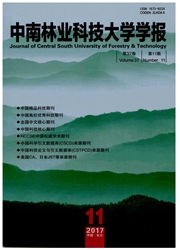

 中文摘要:
中文摘要:
在实验室模拟条件下,研究了白腐真菌Phlebia lindtneri GB1027对有机氯农药氯丹污染土壤的修复作用及影响因素。结果表明,白腐真菌在土壤中较少受到土著微生物的竞争影响,在灭菌和未灭菌土壤中对氯丹的去除率相差不大。木屑、秸秆和马铃薯均可作为营养物和生长载体促进白腐真菌对土壤中氯丹的降解,其中木屑的强化效果最佳,其次为秸秆。本试验条件下,白腐真菌接种量越大,对氯丹的去除效果越好,当接种量为15~20mL时生物修复效率最高。在氯丹浓度为5~100mg/kg的污染土壤中,菌株均显示出较好的修复效果,尤其对100mg/kg的氯丹的30d平均降解速率达到最高的1.71mg(kg·d)。菌株对土壤温度和pH具有较宽的适应范围,污染土壤生物修复的最适温度范围是25~35℃,最适pH范围是4.0~6.0。本研究结果表明该白腐菌株具有应用于氯丹污染场地修复的潜力。
 英文摘要:
英文摘要:
The bioremediation of soil by white rot fungus Phlebia lindtneri GB1027 and the factors affecting the remcdiation capacity were investigated under the lab. simulated conditions. In sterilized soil, the degradation rate of chlordane after 30 days of incubation was similar to that those in un-sterilized soil. The removal of chlordane by fungus from soil could be effectively enhanced by addition of wood dust, crushed straw and potato, and the sequence of removed rates was wood 〉 straw 〉 potato. The removal rates of chlordane from soil increased gradually with the increase in inoculum amount ofP. lindtneri GB1027, and the higher removal rates of chlordane were found from soil with a high inoculum amount of 15 - 20 mL. The strains all showed good repair results in the chlordane-contaminated soil with contaminated concentrations (5 - 100 mg/kg), and the greatest degradation rate of chlordane was 1.71 mg/(kg·d) with initial chlordane concentration of 100 mg/kg after 30 days. P. lindtneri GB1027 had higher degradation rates(53,5% - 59.3%) when the temperature ranged from 25 to 35℃, and the pH value ranged from 4.0 to 5.0. The results indicate that the strains have the potential to apply to chlordane contaminated sites remediation.
 同期刊论文项目
同期刊论文项目
 同项目期刊论文
同项目期刊论文
 期刊信息
期刊信息
